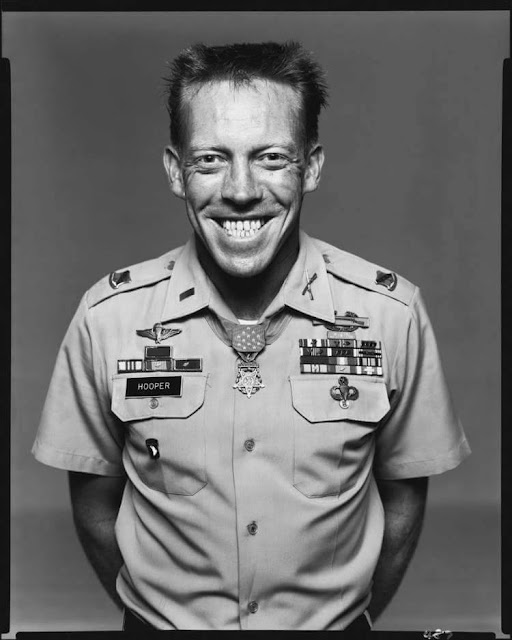LT. GEN. KURT SONNTAG LOWERS ARMY TRAINING STANDARDS TO RAISE GRADUATION RATES – SOCIETAL DECLINE INSIDIOUSLY LEAKS INTO MILITARY, WHICH COVERTLY WEAKENS AMERICAN MILITARY POWER

PROLOGUE:
Since the beginning of the Republic, the American people have frequently made the mistake of voting for people that tell them what they WANT to hear, and not what they NEED to hear. It’s been a problem for a very long time.

There is a story, often told, that upon exiting the Constitutional Convention Benjamin Franklin was approached by a group of citizens asking what sort of government the delegates had finally created. His answer was prophetic: “A Republic, if you can keep it.”
The brevity of that response should not cause us to under-value its essential meaning: democratic republics are not merely founded upon the consent of the people; they also depend upon the active and informed involvement of the people for their continued good health.
And that’s the core of the problem, most Americans are too involved with their own lives to research issues in order to become a fully INFORMED VOTER. Sadly, many people rather believe the news media’s narrative that tells them what to think and who to hate. That’s much easier than doing all the work of searching for facts and listening to opposing sides in order to make up their own minds.
It first starts at home with dubious parenting techniques. The old adage of “spare the rod, spoil the child” is tossed out in favor “negotiating.” Parents do everything possible to make sure their child DOES NOT FAIL, not recognizing that failure has value of its own. As we know from the recent college admissions scandal, some parents pay literally millions to get their child in a prestigious school, most of which are laden heavily with Marxist professors.
America’s schools have become nationwide brainwashing factories to sell socialism. Frequently these young adults graduate but can barely read or write, and have very little knowledge of history and the monetary forces that have made American the greatest economic power on earth. Even though capitalism has its drawbacks, world history has proven time and again, that capitalism is frequently superior to any socialist model past and present.
THE LIBERAL CONCEPT THAT NO ONE IS A FAILURE
HAS INFECTED MILITARY LEADERSHIP
Did the Obama-Era school discipline policy (and mentality) also infect military policies and Pentagon leadership? Remember the horrific mass shooting that killed 17 people at Marjory Stoneman Douglas High School in Parkland, Florida in February 2018? The school district was one of the first to embrace what’s known as “restorative justice” that removes accountability for breaking the law.
Restorative Justice became one of the Obama administration’s darlings for its alleged effectiveness to focus on disciplinary equity. The theory was that if you forgive young people early in their lives, they will realize the error of their ways and become responsible citizens.
So-called “adults in the room” pointed to it’s success because it dramatically reduced arrests. But, they won’t talk about the sky-rocking recidivism rates and how many of those youngsters ended up as career criminals because they thought that crime does pay.
The new superintendent of the Broward County school system, Robert Runcie previously worked hand-in-hand with Obama’s Education Secretary Arne Duncan to screw up the Chicago Public School system. Robert Runcie was the leading force behind instituting new practices within the district for handling illegal misconduct by students without resorting to law enforcement involvement.
In other words, students could violate the law with impunity just like those folks in Washington. Example; little Johnny stole someone purse, and the angry woman wanted to press charges, but a new program intervened and prevented an legal accountability. Then little Johnny went on a stealing spree and ended up with a bedroom full of stolen purses.
Runcie’s new program quickly became a national model for ending zero-tolerance policies in schools. The Broward school district decided to hire Robert Runcie as their new superintendent to implement his new “restorative justice” program down in warm sunny Florida.
Shortly after assuming the job as school superintendent in Broward County, student-related arrests plummeted down by 65 percent and people applauded the new “positive numbers.”
This new “restorative justice” program stopped authorities from arresting or even investigating former high school student Nikolas Cruz who walked into school one day and murdered 17 people. It was all about numbers. In the liberal mind, arrests were down which meant hope was on the rise.
So-called school leaders didn’t want to hold anyone accountable for their illegal behavior, so Nikolas Cruz was given a pass and went on a horrific murder spree. If people want gun dealers arrested for murder for selling the gun, how about arresting the stupid people who created policies that protected the murderer.
LOWERING STANDARDS TO IMPROVE GRADUATION NUMBERS
The military noticed the high dropout / failure rate of those attempting to graduate from the Army’s Special Warfare School and Center (SWCS) where Green Berets are selected, trained and graduated. They put Lt. General Kurt Sonntag in charge and everything went to hell.
Soldiers are fearful of retribution for speaking out, which resulted in a total breakdown of unit morale. Standards at the school’s prestigious Qualification Course (Q-course), where Green Berets are graduated, began to dramatically slide after Sonntag took command in May 2017.
Breitbart.com did a great job exposing the Army’s attempt to lower standards when no one was watching. They listed the specific instances where Lt. Gen. Sonntag was lowering standards and destroying unit morale. Here’s his playbook to increase the number of graduates for the Army’s elite Green Beret fighting force…
- A student could no longer fail the course for not passing any physical standard or test. Before, failing to pass two separate times would have resulted in being kicked out of the course. Now, students are increasingly being passed by a relief board or the training group commander.
- Land navigation required students to navigate open terrain and find set points using a map and compass is no longer a “pass or fail” event. It was turned into a “practical exercise.”
- Students had to pass the language portion before receiving their Green Beret. Now, students can receive their Green Beret before passing it on a “conditional” basis and are allowed to retake the language portion as many times as they need in order to pass it.
- Ethical standards have become increasingly lax. At a 2017 party, a student pulled a knife on someone. Despite the incident being reported to higher command, it was dismissed as merely a “personal” incident, and the student was allowed to continue the course. Before Sonntag, the student would have been tossed out on his ear.
- The GT score, which determines eligibility for specific jobs in the Army, has also been recently lowered from 110 to 107 for aspiring Green Berets.
- The ability to discipline students by instructors was also dramatically reduced. One of the most important things in this type of intensive training is for instructors to have the authority commensurate with their responsibility.
- Students leaving the course voluntarily or involuntarily are being personally called and asked if they would like to come back and finish. Past policy required them to be sent on an overseas assignment or to the 82nd Airborne.
- Lt. Gen Sonntag initiated an “open door” policy, so students can walk into Sonntag’s office and appeal to him directly to be able to continue the course even if they fail.
- After Sonntag arrived, students who had either repeatedly failed phases of the course or failed the course were being recycled back over their recommendations and rules that dictated how soon a student could be put back in.
- Lt. Gen Sonntag punished instructors whose students would fail, or were seen as too tough on their students. In October 2017, one instructor asked his students to show up for physical training the Thursday before a four-day weekend. When only three students showed up out of 40, he called another mandatory training session that weekend. Two hours later, he was fired.

Unit morale had plummeted to a point where Sonntag had to do something to make everyone think he really cared about them. Lt. Gen. Sonntag decided to hold a “town hall” meeting. He declared the meeting was “classified” and prohibited anyone from recording it.
But according to several witnesses, Sonntag told the roomful of about 150 instructors, “I have a client. I have a customer — the first Special Forces Command. They have a number set of missions, and I have to provide a specific number” of graduates.”
One instructor decided the general was just pandering and wrote a scathing 6,399-word anonymous email detailing everything happening at SWCS. He blasted it out to more than 2,000 members of the Army special operations community worldwide. It became known as the “night letter” among Green Berets. One called it the “email heard around the world.”
This is when the general popped his cork. Several days after the email was sent, Sonntag called a formation of instructors, both civilian and military. According to several witnesses, he took off his Army combat uniform top and challenged those who disagreed with him to step forward and fight him.
“He took his top off,” one witness said. “He said, ‘If anybody had any problem with me … my rank just came off, I will fight you guys one-on-one.’” According to another witness, Sonntag also said the email author could be punishable by “death.” The general was losing it and people were worried about his sanity.
Sonntag narrowed down his “hit list” to seven suspects who might have sent the email that exposed how he was gutting the special warfare school. He was like a bull in a china closet, suspending security clearances,and using a slew of administrative, non-judicial punishments that included firing, reassignment, negative evaluation reports, and other actions. He was doing everything he could to find the evil bastard(s) that sent out the “night letter.”
By June of 2018, Sonntag’s witch hunt narrowed down the email suspects to three instructors at the Green Beret school. He issued them all a non-judicial punishment under Article 15, alleging that they were likely behind the email as well as other things. He didn’t need proof. The military doesn’t need proof to convict anyone of anything… We keep telling you the system is rigged in favor of the system and generals who are part of the military swamp.
The author of the email — who was one of the three suspects — admitted to writing the email and accepted the punishment. He was stripped of his Special Forces tab and returned to the conventional Army, which is the biggest disgrace to befall any Green Beret.
The two other suspects (instructors Robertson and Squires) said they had nothing to do with the email, but Sonntag accused them of using their work computers to develop and launch an online application and using their positions as instructors to have students sign up for it. The general didn’t give a shit… he just wanted hides to nail to the wall.
Robertson and Squires decided to fight the accusations by requesting a court-martial where they could plead their case in front of a military judge. It was a risky move, because who do you think picks the jury and writes their career propelling (or ending) efficiency reports, the convening authority which would be Lt. Gen. Sonntag.
IF YOU CANT COURT-MARTIAL,
THEN ATTACK WITH THE POWERS OF A GENERAL OFFICER

Sonntag was probably worried that even more truth would leak out and withdrew the Article 15 non-judicial punishments which denied any request for a court-martial.
Instead, he used his power as general in the Army to administratively attack them by issuing them both a permanent General Officer Memorandum of Reprimand (GOMOR). A GOMOR is a letter of reprimand that can be a career-ender, and cannot be fought.
A GOMOR is a non-rebuttable presumption of guilt that cannot be challenged. Sonntag GOMORs triggered discharges for both instructors from the Army. And that my friends, is how the United States Military treats their elite soldiers.
To make it look like they care about justice and fairness, the Pentagon’s inspector general is allegedly investigating Lt. Gen. Sonntag. The military will circle the wagons for about a year pretending to investigate one of their card-carrying members of the original good-old-boy club.
That elite club is the flag-ranking members of the United States military who enjoy many perks, but the most important perk is being allowed to retire to avoid any accountability.
In about a year, after everything has died down, Sonntag will be transferred to another job or allowed to retire. Our brave fighting men and women will be cast aside to protect the general and all will be forgotten. But MCC won’t forget, we guarantee it.
We have seen this before… Years ago, a commanding officer and five of his staff officers in the naval reserves were trying to artificially prop up their reserve retention numbers by paying reservists for work they never did. Chief Petty Officer Michael Tufariello reported their massive payroll fraud scheme, and they had him imprisoned in a military mental hospital on a trumped up charge.
More recently, the superintendent of the Broward school system wanted better numbers, so they quit holding people accountable which ended up causing the deaths of 17 people.
And now, Lt. Gen. Sonntag wanted to increase the number of graduates from SWCS, so he initiated measures to quit holding people accountable which produced some graduates with dubious skills. How many lives that will cost in the future, no one knows. Sadly, the only people he held accountable were the Green Beret instructors who spoke truth to power. They were ultimately ruined.
Folks, if you are on active duty and someone says, “Tell me what’s on your mind, you can trust me. I won’t tell anyone.” Are you really going to fall for it? If you want to keep your military career, you had better go along to get along.
Make no mistake; the military brass in the Pentagon knew exactly what Sonntag was doing because it was the Pentagon that ordered him to do it. Now, they are pretending to investigate Sonntag…. Give me a fricking break.
Until real reforms are made that actually hold the admirals and generals accountable, you had better get out of the service as soon as you possibly can. We say this because we love you.









